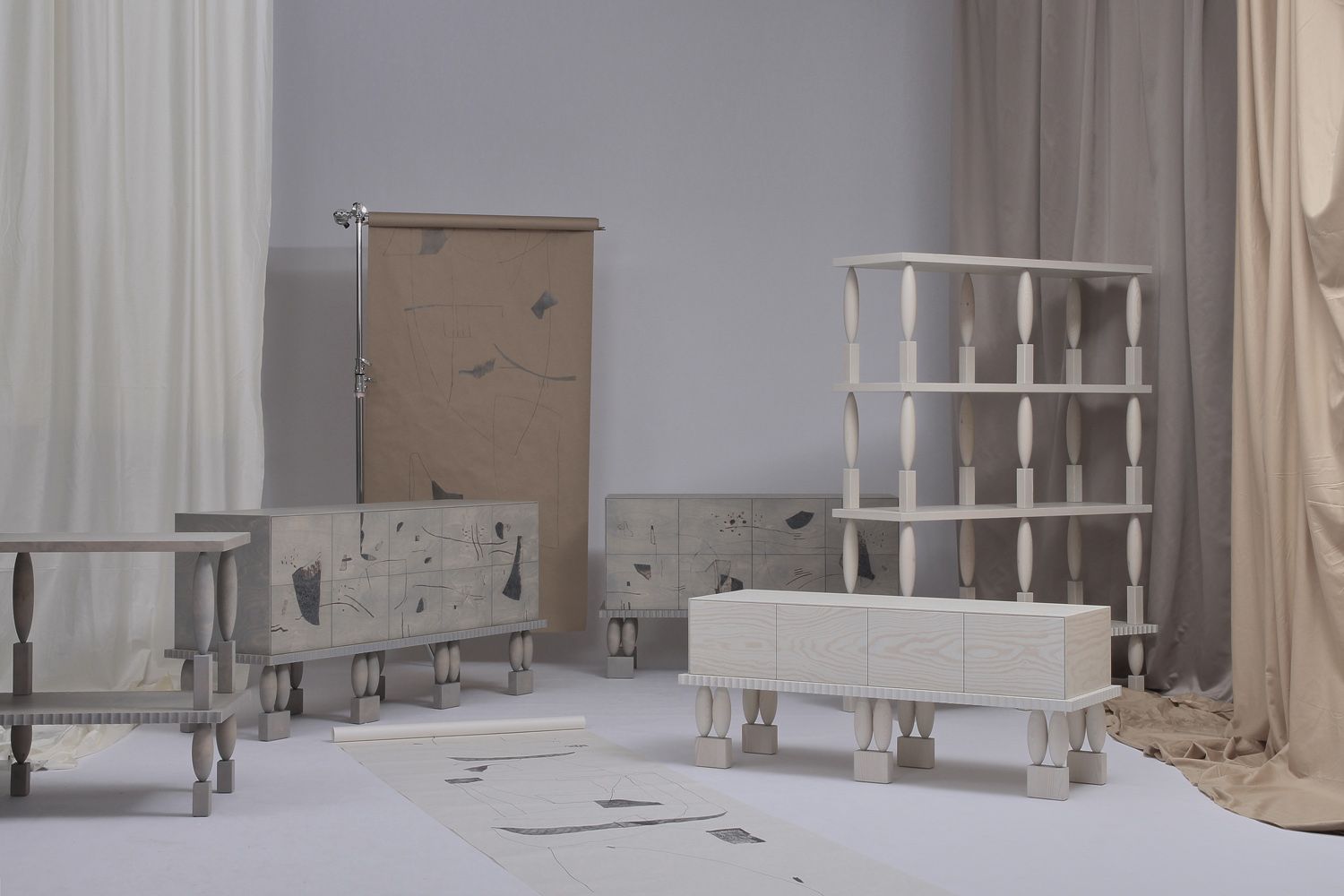Contextualization, careful attention to design process and detail are combined in the work of Jiří Krejčiřík, who lives and works in Prague. The Czech designer takes a multi-disciplinary approach to object-making: his characteristic formal language intertwines design with art and past with the present. The furniture, lighting and interior design elements created in this way eventually become collectible pieces. Interview!

From a young age, Jiří Krejčiřík has always enjoyed drawing in his spare time, and it soon became clear that he wanted to pursue an art career. Since no one in his family was an artist, he chose a more practical course of study: during his high school years, he studied furniture design and manufacturing. But after four years, working with just one material, wood became a little monotonous for him, and during his university studies, he dived into product design. Meanwhile, fine art remained important to him, but at that time, he had not yet found a way to combine it with the world of design. In developing this attitude, he was greatly influenced by the Royal Danish Academy of Fine Arts in Copenhagen, where he spent six months.
There are different approaches to what makes an object collectible: some say they raise questions, form opinions, or use materials in innovative ways. In your work, what does collectible design mean to you?
My work is about self-expression. I try to create objects that are authentic: that convey the authenticity of self-expression. I am also a big fan of art and architecture history, which I often use as a starting point. My work is characterized by a unified visual language that weaves together history and culture in a contemporary way. The furniture, lighting and other objects I design often refer to a particular era or personality from the past. However, they are mostly limited edition and handmade locally in the Czech Republic. I am pretty lucky with my clients since they mostly come to me because of my previous work, so they are often open to unusual design solutions.

What do you think about the relationship between form and function: is there an order in creating a collectible design object? What comes first: aesthetics or functionality?
Both are important, but they are not the only way to understand design. In my commissioned work, I tend to rely more on function, but in my independent projects, I rely on concept and visual expression. A good example of merging these two different approaches is the Ultramarine staircase wall I designed for a private residence in the Czech Republic.
Some collectors are looking for contemporary design objects with references to design history. In the design of your sculptural coffee tables, the past meets the present in a sophisticated way: what is there to know about your Eclecticism collection?
In my Eclecticism furniture collection, I explore, as you mentioned, the relationship between history and the present. Each piece is inspired by a particular style or movement and references a particular personality closely associated with that era. The coffee tables are exhibited in various galleries and private collections across Europe: one, called Odyssey, inspired by the aesthetics of Slovenian architect Josip Plecnik, has been part of the permanent collection of the Museum of Applied Arts in Brno since last year. However, these tables are also available for purchase: individual pieces are made to order for potential customers, who also receive a certificate of authenticity.
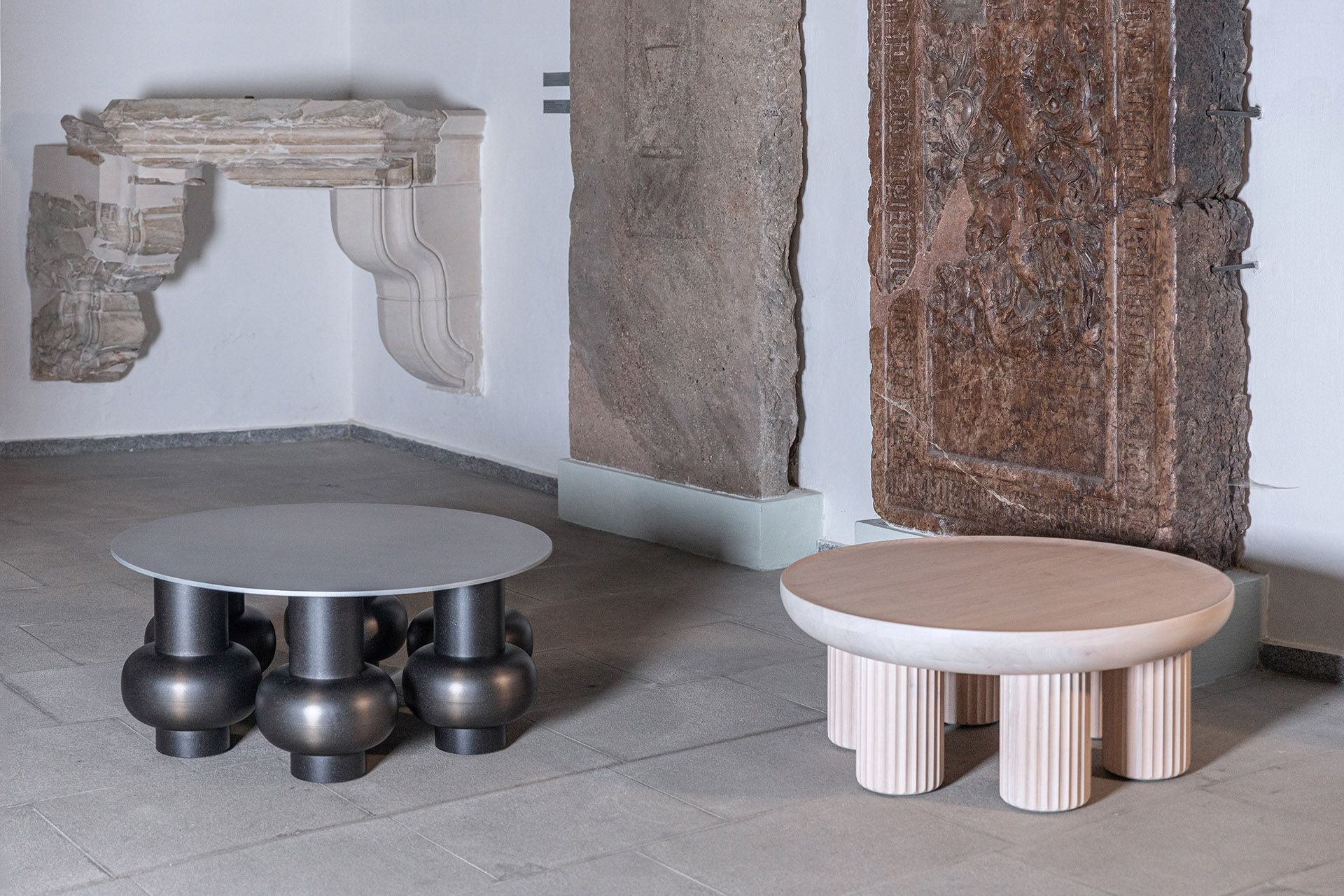
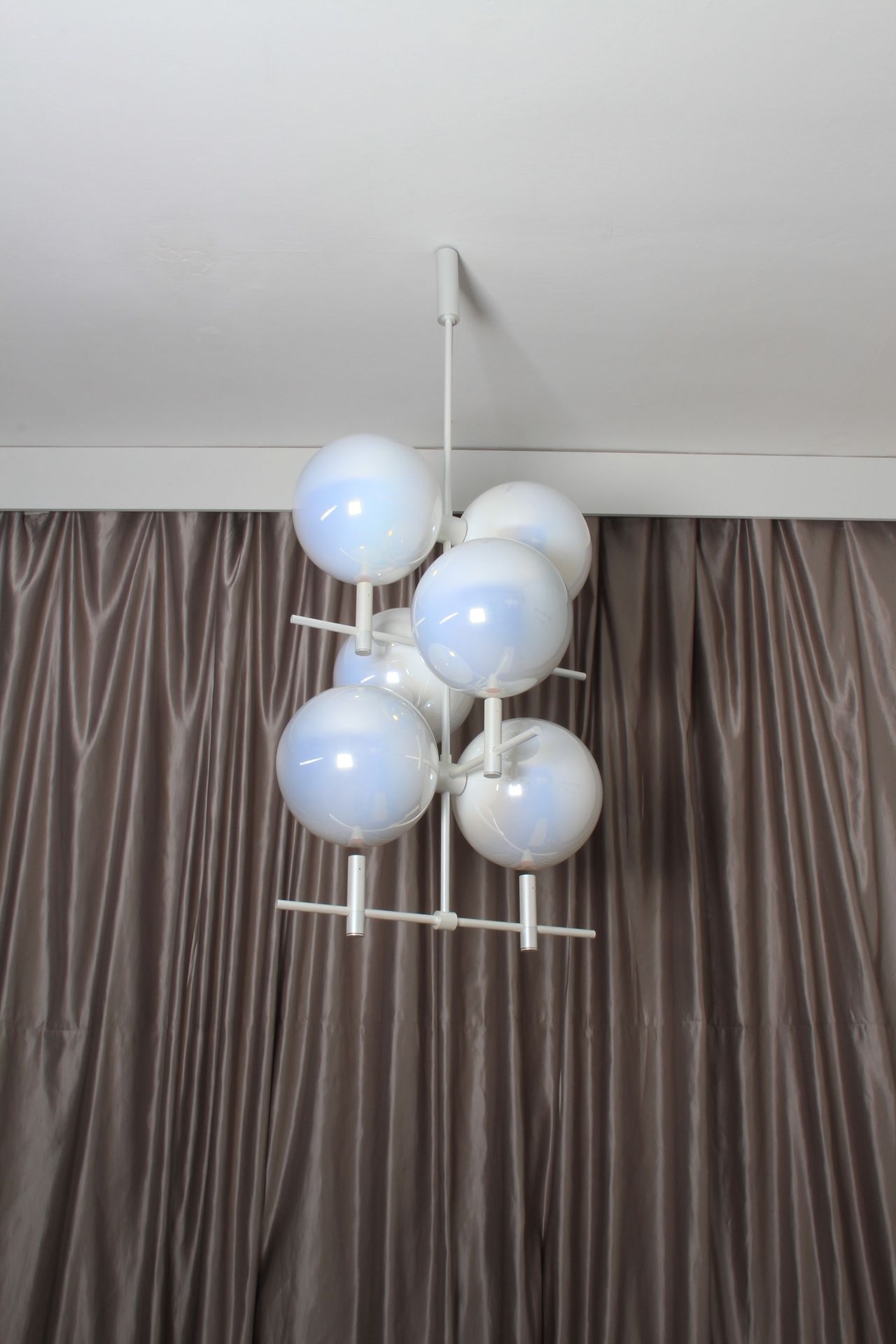

Heritage is also present in your work in other forms. Czech glassmaking holds a strong tradition and unique glass objects can also be found in your portfolio.
Yes, apart from history or tradition, it inspires me if I switch between the materials I work with from time to time. Each material has completely different characteristics, so I have to approach them differently. This attitude of discovery and challenge is exciting for me. Besides my own projects, I also freelance in Rony Plesl’s studio: that’s how I got to this medium.

The theme of my Heritage/Contemporary collection is upcycling, old versus new, traditional versus contemporary. I have combined traditional upcycled hand-cut glass with new hand-blown glass, so in fact, each object is unique and cannot be reproduced. I sourced each of the recycled glass elements from antique shops and glass collectors, then sandblasted each piece and combined them with hand-blown pieces I made specifically designed for each object. The collection aimed to achieve a refined harmony: not to strive for minimalist reduction, but rather to create diversity, complexity, and tension—to create forms and compositions that are not otherwise typical of the glass world. I also use glass objects to explore how the perceiver responds to an unfamiliar aesthetic and how it changes over time.
One of your latest Nouveau furniture collections was made with a special wood-burning technique. The individual pieces were presented at the Paris Design Week 2021 and exhibited at events such as Designblok in Prague, the Design Without Borders event at the Kiscelli Museum in Budapest, and Bratislava Design Week. What is the collection’s background story, and what future plans do you have for it?
The collection was inspired by the villa of art nouveau artist František Bílek. The artist was primarily known as a fine artist and worked in the mediums of sculpture and graphics. However, he also designed his own villa, together with its entire interior: a great example of Gesamtkunstwerk, in which all the elements are seamlessly integrated into a complete work of art. This has led me too to the idea of combining design and drawing in the creation of this collection, crossing the boundaries between applied and fine arts. The sculpture-like furniture I designed is decorated with a unique artwork by the artist Taja Spasskova, etched on the furniture’s surface using the wood-burning technique mentioned above and typical of that period. The limited-edition furniture collection features not only a shape but also a pattern that is linked to the period. Each piece is handmade with special attention to fine details such as miter joints, beveled edges and a soft-touch matt finish. The whole collection consists of twenty different pieces: for the events you mentioned, seven pieces of furniture have been completed so far, so I would like to realize more items of the collection soon.
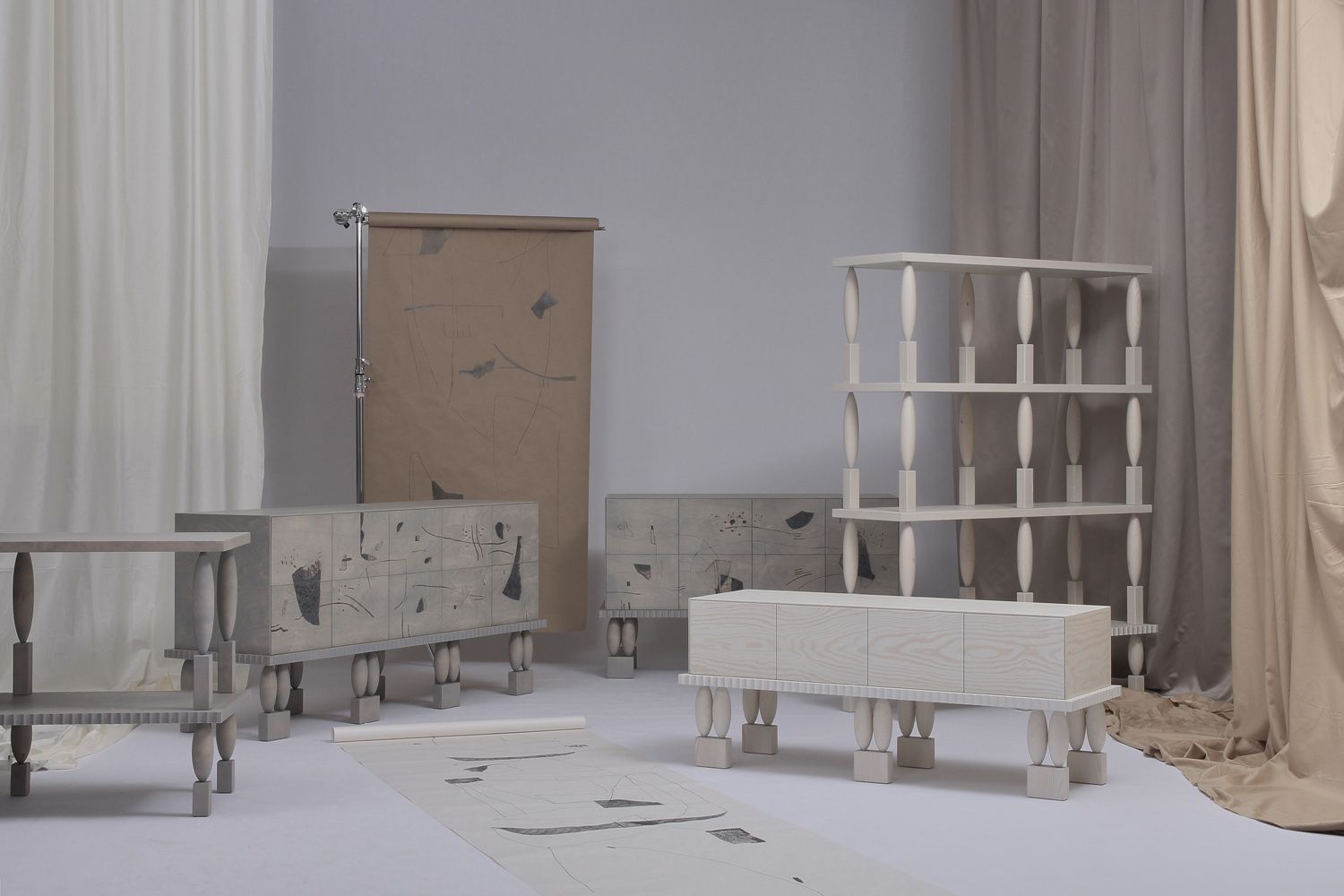
Your appearances show that you choose carefully where to exhibit your design objects: your work can be seen in prestigious galleries and design showrooms. Do you plan to have a gallery to represent your work?
From time to time, I receive offers from various galleries to exclusively represent my design work. I am open to this possibility, but I have not yet agreed with any of them: for the time being, I am working in a non-exclusive collaboration with galleries in France, Australia, Switzerland, Italy, the UK and the Czech Republic.
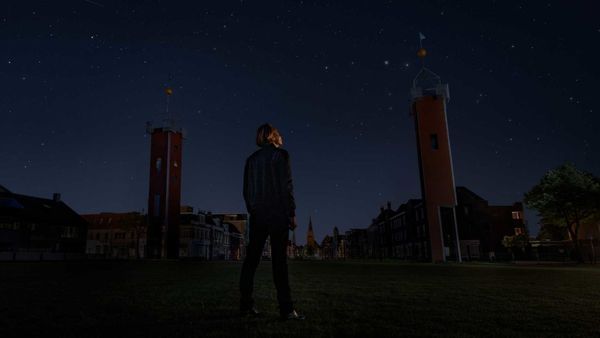
A Dutch city's lights were switched off to reveal a starry sky as a heritage

Nike acquired a company that makes virtual shoes










